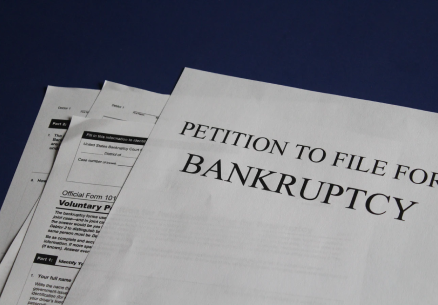
Chapter 11 bankruptcy provides companies an opportunity to restructure and return to profitability, but maintaining liquidity through lines of credit and loans during bankruptcy is a challenge.
Liquidity and cash flow are the engine and fuel of business. Without a regular infusion of cash, it’s impossible to place orders, make payroll, advertise, invent, or expand. Companies that are starved for cash cannot thrive and recover.
DIP, or debtor in possession, is a form of financing that is accessible to companies in Chapter 11 bankruptcy. Due to the petitioner company’s precarious financial situation (the success rate of Chapter 11 reorganization and return to solvency is less than 20 percent), finding a lender is an uphill battle. Insiders who seek control of the company may offer a DIP loan as part of a takeover strategy, but these opportunities are weighed carefully by the bankruptcy trustee out of fairness to existing creditors.
How to Finance a Business During Bankruptcy in Wisconsin
When companies are in financial trouble it’s important to have the assistance of seasoned counsel as guides. Attorneys experienced in Chapter 11 bankruptcy are familiar with the court’s requirements and can be the client’s strongest asset.
The sequence in bankruptcy and securing DIP financing include:
- Consulting with legal and financial partners to examine the company’s assets and debts, long-term outlook, and approach to creditors.
- Filing for Chapter 11 bankruptcy. This step requires significant work toward developing a restructuring and recovery plan to present to the court. Multiple versions can be developed, showing the company’s path with and without DIP financing.
- Negotiating with creditors. Called a workout, this step attempts to reduce the overall debt load and combine it with liquidating assets to satisfy the court’s requirement for repayment can show a good faith effort to make good on loans and other debts.
- Plan approval. A creditor’s committee is assembled by the bankruptcy trustee overseeing the case. These secured and unsecured creditors can make input that shapes the company’s restructuring plan.
- Seeking DIP Financing. Specific banks and institutions are identified as specializing in this type of cash infusion. Insiders and potential partners or buyers of the company are also considered. The court’s representative (bankruptcy trustee) must approve any new loans in advance and will scrutinize the source to weed out any unsuitable arrangement.
- Balancing the demands of creditors. The DIP financing takes precedence over other lines of credit, adding a layer of complexity to creditors seeking repayment.
- Executing the recovery plan.
Types of DIP Financing in Wisconsin Bankruptcy
During the Chapter 11 process, financial and legal advisors should confer to develop and refine the best restructuring plans for the company. They must provide input throughout the process as decisions are made and approval (or changes) are made by the bankruptcy trustee, such as the type of DIP loan allowed.

- A DIP loan is sometimes called a priming loan. It is meant to address immediate needs for the business to function, such as payroll. Because the loans are difficult to obtain, they often carry high interest rates and liens on business assets.
- A roll-up DIP loan provides an infusion of funding but also reclassifies the company’s debts, and can change the order of priority for repayment.
- An unsecured DIP loan is risky; it’s offered without collateral but usually demands priority status for administrative expenses. These are most often available to small businesses with few assets.
- An accordion DIP provides options for expanding the amount borrowed as the Chapter 11 process proceeds.
- Tranche DIP loans are part of a whole yet structured to provide financial aid at specific times and for specific purposes, such as paying for material to complete an ongoing project. Each tranche can have different interest rates, collateral, maturation periods, and other terms.
- Exit DIP loans can provide the boost a company needs to get through the final requirements of Chapter 11 and back to operational status.
Strategic Partners in Wisconsin Chapter 11 Cases
Running a business poses daily challenges. Finding the right partners who can help restructure and return your company to solvency after Chapter 11 bankruptcy is crucial.
Business bankruptcy specialists at Kerkman & Dunn have significant experience and knowledge of sources available for bankruptcy financing in Wisconsin. Call for a consultation.


